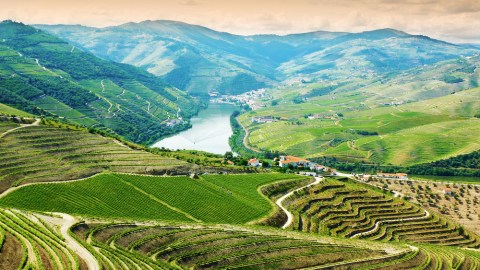How Green is the Valley? Putting a Dollar Value on Ecosystems

How much is something worth? If you are looking at an ounce of gold, a pound of rice or a barrel of oil, the answer is easy. Markets exist to set prices between buyers and sellers.
But what if you are trying to establish the value of clean air and water, the cohesiveness of your community or your health? What if you wanted to understand how much each of this these things was worth in order to knit them together and establish the value of an entire ecosystem?
Economists call this establishing the value of “ecosystem services,” and it is no less important than setting the right price for a barrel of West Texas Crude. By working together, economists, ecologists, local residents and others can help begin to set the values for the pieces that make up an ecosystem. Through study, interviews with locals and research, things like the value of clean water to irrigate crops, or a well-functioning wetland as habitat for aquatic species begin to come into sharper focus.
Understanding these values can help protect these natural landscapes in the face of development pressures and a changing climate. This understanding also helps scientists bolster what is working and transfer lessons learned to other landscapes that may not be functioning as well.
Putting a Dollar Value on Ecosystems
A few weeks ago, a team of scientists, policy experts from Environmental Defense Fund and other groups and local citizens, led by Dr. Steven Archambault of New Mexico State University and Dr. Nejem Raheem of Emerson College in Boston, began such an effort to examine ecosystem service values in agricultural communities in northern New Mexico. As is the case across the Southwest, many of these villages were settled by Spanish colonists in the 1600’s and their ecosystem is defined by irrigation systems called acequias. Each acequia (a-say-key-a, from the Arabic word for “water bearer”) is a hand-dug and locally maintained ditch that channels mountain snowmelt into the fertile valley bottoms for agricultural and domestic use.
As the name implies, these irrigation systems originated in North Africa, were first transplanted to Spain and then brought to the New World. Their democratic system of governance, with an elected mayordomo or chairman, parciantes who possess rights to irrigate with water from the ditch and an annual limpia or spring cleaning when the village joins together to maintain the ditch, have been called the oldest operating democratic system on the continent.
In this part of New Mexico, these irrigation systems are the backbone of mountain communities where many families trace their surnames back to the original settlers. By distributing water from the high slopes of the southern Rocky Mountains, known locally as the Sangre de Cristo range, these irrigation systems literally provide the lifeblood of these communities. They are also the defining structure in the ecosystem. Their banks are typically green ribbons in the desert, grown up with willows and grasses that provide habitat for a number of species, while the unlined ditches also allow water to seep into and recharge local aquifers.
Understanding the value of the ecosystem services these acequias provide will help these mountain villages and this unique ecosystem survive as pressures mount. Water is scarce in the Southwest and some developers have attempted to transfer water rights from the acequias to build new homes. Ecosystem service values let us compare between different uses of water by using a common measurement: money. The dollar value of these water rights is fairly straightforward to figure out; by understanding the dollar values of the ecosystem services these landscapes provide communities can make better decisions in the face of these pressures.
What’s Clean Water Really Worth?
For example, once values are established for what economists term “non-market resources” – things like clean water or wildlife habitat – these values can be included in policy considerations or cost-benefit analyses. For an acequia, establishing these values could help a community seek full and just payment from a developer seeking to alter the landscape. Or, these values can be used to compensate a community when an ecosystem becomes degraded through an environmental accident. This approach, to more fully and holistically value the worth of an ecosystem after a manmade disaster, is exactly what the National Research Council of the National Academies of Science has recommended in the wake of BP’s Deepwater Horizon spill.
Climate change is already diminishing the amount of winter snow pack in New Mexico and projections show this could get much worse. As the Los Angeles Times recently noted, while drought is gripping the entire western United States, New Mexico is the driest of the dry. Three quarters of the state is categorized as experiencing severe or exceptional drought and reservoir storage across the state is a mere 17% of normal.
How will the acequia systems and landscapes cope with these pressures? Will an altered climate and less runoff mean the end of these ancient systems and the traditional villages that depend on them? Or is the acequia half full? It is possible that this community-built and maintained infrastructure can actually provide greater resiliency and adaptability in the face of a drier climate?
It will take a few years for researchers to start developing answers to these and other questions. But their efforts will help protect these communities and the landscapes they inhabit, as well as, potentially, provide us all a lesson in how to better cope with a changed world.
The article originally appeared on the EDF Voices blog and is reprinted with permission.
Image courtesy of Shutterstock





